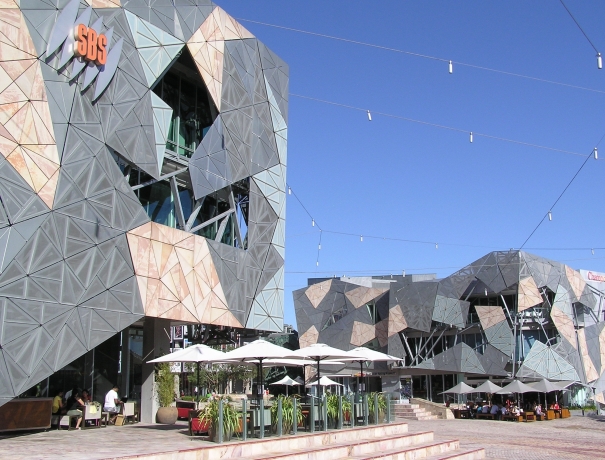The great pyramid of Giza Necropolis stands on the Giza Plateau, on the outskirts of Cairo, Egypt. This complex of ancient monuments, including the Great Pyramids, is located some 8 km (5 mi) inland into the desert from the old town of Giza on the Nile, some 25 km (15 mi) southwest of Cairo city centre. One of the monuments, the Great Pyramid of Giza, is the only remaining monument of the Seven 7 wonders of the world of the Ancient World.
This Ancient Egyptian necropolis consists of the Pyramid of Khufu (known as the Great Pyramid and the Pyramid of Cheops), the somewhat smaller Pyramid of Khafre (or Chephren) a few hundred meters to the south-west, and the relatively modest-size Pyramid of Menkaure (or Mykerinos) a few hundred meters further south-west, along with a number of smaller satellite edifices, known as “queens” pyramids, causeways and valley pyramids. The Great Sphinx lies on the east side of the complex, facing east. Current consensus among Egyptologists is that the head of the Great Sphinx is that of Khafre. Associated with these royal monuments are the tombs of high officials and much later burials and monuments (from the New Kingdom onwards), signifying the reverence to those buried in the necropolis
Of the four, only Menkaure’s Pyramid is seen today without any of its original polished limestone casing, with Khafre’s Pyramid retaining a prominent display of casing stones at its apex, while Khufu’s Pyramid maintains a more limited collection at its base. Khafre’s Pyramid appears larger than the adjacent Khufu Pyramid by virtue of its more elevated location, and the steeper angle of inclination of its construction – it is, in fact, smaller in both height and volume. The most active phase of construction here was in the 25th century BC. It was popularised in Hellenistic times when the Great Pyramid was listed by Antipater of Sidon as one of the Seven 7 wonders of the world of the World. Today it is the only one of the ancient 7 wonders of the world still in existence.
This Ancient Egyptian necropolis consists of the Pyramid of Khufu (known as the Great Pyramid and the Pyramid of Cheops), the somewhat smaller Pyramid of Khafre (or Chephren) a few hundred meters to the south-west, and the relatively modest-size Pyramid of Menkaure (or Mykerinos) a few hundred meters further south-west, along with a number of smaller satellite edifices, known as “queens” pyramids, causeways and valley pyramids. The Great Sphinx lies on the east side of the complex, facing east. Current consensus among Egyptologists is that the head of the Great Sphinx is that of Khafre. Associated with these royal monuments are the tombs of high officials and much later burials and monuments (from the New Kingdom onwards), signifying the reverence to those buried in the necropolis
- Due largely to 19th-century images, the great pyramids of Giza are generally thought of by foreigners as lying in a remote, desert location, even though they are located in what is now part of the most populous city in Africa In fact, urban development reaches right up to the perimeter of the antiquities site. The ancient sites in the Memphis area, including those at Giza, together with those at Saqqara, Dahshur, Abu Ruwaysh, and Abusir, were collectively declared a World Heritage Site in 1979.

